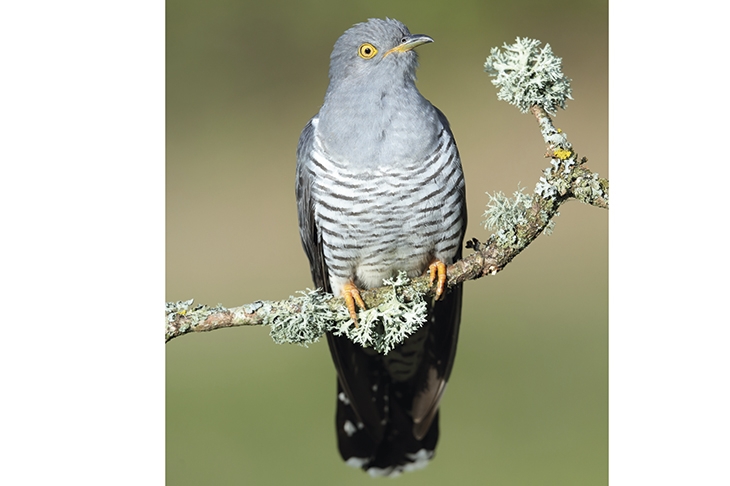St Tiburtius’ Day, on 14 April, is traditionally when you will hear the first cuckoo. Since at least the Middle Ages, cuckoos have been seen as heralds of spring. They are also often associated with romance, and yet they are some of the cruellest birds found in Britain.
The adults arrive in this country at the end of March or the beginning of April and depart in late July or August. They return to central Africa and fly, either via Italy, resting near the River Po and continuing over the Sahara, or stopping in Spain before entering Africa from the far western end. They live mainly in and around the Congo rainforest and in similar habitats as far south as Angola. They come to Britain merely to mate. Why they find it necessary to fly all that distance to propagate their species in Europe has never been discovered.
It is well known that the cuckoo lays her eggs in other birds’ nests. The nest is chosen carefully so that the cuckoo eggs closely resemble those of the host, usually the dunnock or the redstart. The dunnock is normally chosen over the redstart as it is less observant and more likely to accept the cuckoo egg. The female cuckoo drives the host bird from the nest by mimicking the call of the sparrow hawk and while it is away lays her egg. To ensure this hatches before the host’s eggs, it is incubated inside the hen cuckoo for at least 24 hours before being laid.
Once the host’s eggs hatch, the young cuckoo grows faster than the host’s chicks. The cuckoo, larger and more developed, uses its back to heave the host’s chicks out of the nest one by one to their death. Should there be any eggs left, these too are pushed out. This ensures that the host parents concentrate entirely on feeding the intruder. Even here cunning is used. The young cuckoo, like its mother, is a brilliant mimic. It copies the calls of the host chicks and so is fed their share as well as its own.
The hen cuckoo places between 12 and 22 of her own eggs in host nests but only ever one at a time. Once she’s laid her eggs, she never meets her young before she migrates back to Africa.
Since the cuckoo chick is larger than the host chick, it needs more food. It also fledges at about three weeks after hatching, compared to 12-13 days for most of the host species. If the hen cuckoo is out-of-phase with a clutch of host eggs, she will eat them all so that the hosts are forced to start another brood.
The fledged cuckoo will migrate to Africa at the end of August, roughly a month after the adults depart. But the miracle of this voyage is that, unlike most migratory birds, the cuckoo makes the journey alone.
Some of these observations were made by Edward Jenner. For this work, rather than his development of the smallpox vaccine, he was elected a Fellow of The Royal Society in 1788 — an extraordinary choice of priorities.






Comments